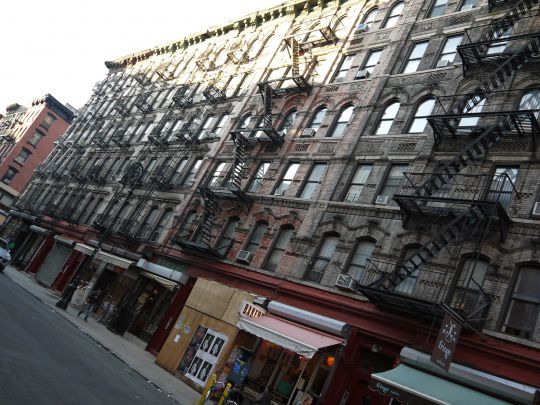
If you’re feeling the frustration of the apartment hunt, you’re definitely not alone. The New York City real estate market is unlike any in the world. Average rent is $1,086 across all types of floor plans. That’s more than other cities’ median mortgage payments.And for internationals the apartment search is even more difficult. You’ll need to have a Social Security number, bank statements, references, several security deposits (to offset weak applications), at least six months of pay stubs — and above all, time.Although you might feel overwhelmed, don’t worry! If you put in the work and prepare, eventually you’ll find an apartment that’s right for you. This five-step apartment-hunting guide will help you along the way.Step one: Research, research, research!You’ve done the work to secure the proper visa or immigration status, gone through the hassle of getting a Social Security number, and even subscribed to the New York Times. >But you still need to figure out where you want to live.Before you start a complete apartment search across all five boroughs, first determine which neighborhoods fit your lifestyle and your budget. Got kids? Then you’ll need an area with a great school system. Need to avoid a long daily commute? Then you’ll need to look in areas near work or school.By narrowing your selection down, you can avoid wasting precious time pursuing a home that won’t meet your needs and wants. And while you search, it’s important to start saving money. You’ll find out why in step three.Step two: Find that apartment!If you have the money, hire a broker. While they do charge a very substantial fee, they do all the dirty work for you: find the perfect place, organize the paperwork, and negotiate deals between you and the property’s owner.But like most of us, you may be on a budget. So search everywhere. Check classified ads (with photos, of course), join an apartment referral service, or sign up for waiting lists from the city government. Or just walk around! You might stumble upon a “For Rent” sign in front of your ideal building. Remember: Finding the ideal space is half the battle (and we’re only on step two).Step three: Dot your I’s and cross your T’s Your paper application has to be pristine, and you’ve got to back it up. Compile an accurate packet that includes:
- A letter from your employer verifying your position, salary, and employment term.
- At least six pay stubs.
- Your most current bank statements.
- Contact information from previous landlords.
- References.
- The broker’s fee (if applicable).
- The first and last month’s rent, as well as a security deposit (usually equal in amount to one month’s rent).
- Money for application fees, which can range from as low as $25 to $100 or more.
Before you apply for any apartment, make sure you meet the renting requirements. If you have bad credit or your income doesn’t meet the city-wide requirement of 40 times the rent, consider it a lost cause. Even with offers of additional security deposits, your application may still be rejected.For internationals, it may not be feasible to have all the necessary paperwork on hand or meet all the requirements. If this is true for you, have a guarantor available. A guarantor will act as a co-signer who guarantees that rent will be paid monthly and on time (or they take on the responsibility themselves).Your best bet is to have a guarantor who lives in or near New York City, and make sure they make above the guarantor’s income requirement of 80 times the monthly rent.Step four: Apply, apply, apply Ever heard the adage “Don’t put all your eggs in one basket”? The same goes for apartment hunting in New York City.Don’t forgo other application opportunities because you think you found the perfect apartment at the perfect price. Chances are, it’s someone else’s “perfect,” too. And if that someone’s application is more appealing than yours, you can count yourself out.There’s no harm in investing several hundred dollars in non-refundable application fees if it affords you a greater chance of securing a living situation. The alternative is to apply for one place at a time and risk having to restart the process, stay with friends for an extended period of time, or stay in an expensive hotel or hostel.Step five: Don’t forget the part that comes after the searchOnce you finally sign a lease, you can celebrate — but only for a little while. Now it’s time to settle in, and that means movers, new furniture, and utilities. These are the little things that can get lost in the apartment shuffle.As a tip, avoid expensive moving fees by looking through classified services such as Craigslist. There are plenty options — from “man with a van” listings to experienced movers — ho charge much lower fees than traditional businesses to move and assemble your items.Some residences may come with electricity and gas already hooked up and running, but do not hesitate to set up an account in your name. You don’t want to take for granted that those subtle luxuries will last and then come home to a pitch-black apartment and spoiled food in the fridge.

